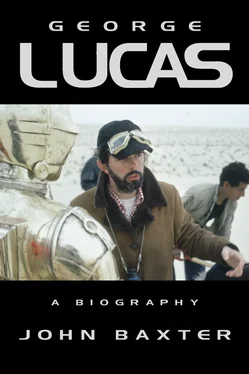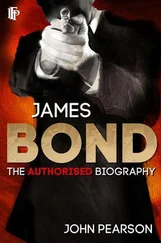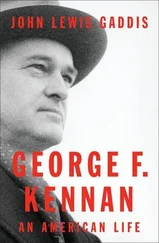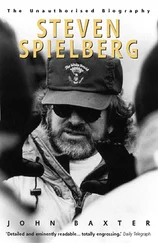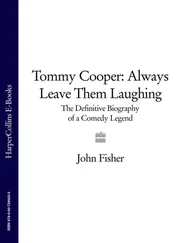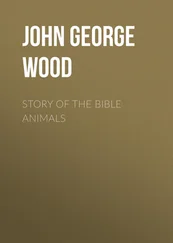In Korty’s simple enterprise, Lucas too glimpsed a movie business shaped precisely to his personality. Korty’s films were accessible, but not overtly commercial. He was removed from Hollywood, but still connected to the audience by the independent cinemas which had proliferated since the studios relinquished their hold on exhibition. Above all, this was a cinema without big stars and the problems they brought with them – problems Lucas had seen doing their damage on The Rain People .
Coppola, inevitably, was more grandiose. Working in a barn on worn-out Moviolas was bullshit. He had something more baronial in mind. This difference in scale would be another wedge driven between Coppola and Lucas, master and mentor.
Finian’s Rainbow was due for release on 9 October. Nobody expected it to live up to Warners’ inflated expectations. Early in August, Coppola gave a gloomy interview to the Hollywood Reporter , which headlined it: ‘Francis Coppola to Make Only Own Stories in Future.’ Shortly after, he told critic Joseph Gelmis: ‘It’s come to the point where I just want to get out altogether. I’m thinking of pulling out and making other kinds of films. Cheaper films. Films I can make in 16mm.’
With his salary on Rain People at an end, Lucas began editing his documentary about The Rain People , christened Filmmaker – or rather, filmmaker – and subtitled ‘a film diary’. He also picked up the strings of his friendships with people from USC. Charley Lippincott was finishing his PhD and running the USC film society, but many others were already working in the industry. Milius had just had his first script filmed. Coppola commissioned him (with Warners’ money) to write the adaptation of Conrad’s Heart of Darkness relocated to Vietnam. Lucas would direct it.
‘George and I would talk about the battles,’ says Milius, ‘and what a great movie it would make. He loved it because of all the technology, the helicopters, air strikes by Phantoms, the night-vision scopes and devices to detect people walking around at night, and I loved the idea of a war being fought that way. Of course, we hadn’t lost it then, so it was a little easier to be interested in it. We wanted a scene where the guys are doped out of their minds and they call in an air strike on themselves.’ The provisional title was Apocalypse Now , inspired by a button Milius had seen worn by a hippie that said ‘Nirvana Now:’ ‘I loved the idea of a guy having a button with a mushroom cloud on it that said, “Apocalypse Now.”’
Haskell Wexler had hired Walter Murch to mix TV commercials for a company he partly owned. In the autumn, Lucas suggested to Coppola that Murch, whom he hadn’t met, mix The Rain People . He got the two men together, and after one meeting Coppola pointed to the piled-up cans and said melodramatically, ‘Here’s the film. Cut the sound.’ Murch started work in a tiny house in Benedict Canyon. The fact that he didn’t belong to the union worried Murch more than it did Coppola, though he eventually found it an advantage. Too nervous to order sound effects from a library for fear that someone would demand to see his union card, he invented and improvised. The result was a quantum leap in the quality of movie sound. To cover the union problem, Coppola invented some new terms, ‘sound design’ and ‘sound montage,’ which conveniently obscured Murch’s activities.
Kinney Services, a conglomerate which made its millions out of parking lots, had bought Warner Brothers. Coppola mulled over a way of getting them to back his move to San Francisco. He found it in the experience of Dennis Hopper and Peter Fonda, who’d made Easy Rider on a few joints and a shoestring, and who were now the hottest talents in Hollywood. As the novelist Joan Didion wrote, ‘every studio in town was narcotisized on Easy Rider’s grosses, and all that was needed to get a picture off the ground was the suggestion of a $750,000 budget, a low-cost NABET or even a non-union crew, and this terrific twenty-two-year-old director.’ Under ex-agent Ned Tanen, a close friend of editor Verna Fields, Universal had launched a program of ‘youth movies’ for under $1 million each. This initiative was to produce most of the worthwhile and commercially successful post- Easy Rider films by young directors, including American Graffiti .
Coppola was twenty-nine, with one dud to his credit and, if he was any judge, another one waiting to emerge in The Rain People , but he was ready to embrace the Easy Rider ethos if that’s what it took to relocate to San Francisco. He and Ron Colby flew to Cologne in the autumn of 1968 for the Photo-kina exhibition, which showcased the latest in film equipment. Dazzled by high-tech German gear, Coppola impulsively ordered an $80,000 Keller sound-mixing system and some cameras, not knowing where the money would come from to pay for them, nor in what premises he would install them.
In Denmark, they visited a company called Laterna Films. ‘I was thrilled to see a beautiful old mansion with gardens and trees that had been turned into a film company,’ Coppola said. ‘The many bedrooms had been transformed into editing rooms, the garage was a mixing studio; everywhere young people were working on their films, discussing their projects while eating lunch in the garden.’ He was particularly charmed by the collection of rare magic lanterns and early motion toys kept in the house. They illuminated a route back to the cinema’s earliest days, when movies were still a game, and film-makers took to the road whenever it pleased them, setting up studios in barns and improvising stories from the events of the day. He returned to California even more determined to leave Hollywood.
On 22 February 1969, George and Marcia married at the United First Methodist Church in Pacific Grove, near Monterey. John Plummer was best man. Coppola came, as did Murch, Hal Barwood and Matthew Robbins, and even Verna Fields. The newlyweds left for a honeymoon in Big Sur in Marin. Driving into Marin County, on the other side of San Francisco Bay, they fell for sleepy Mill Valley, a typical Northern California town, with redwoods and a river, and rented a small hilltop house on Vernal Road for $120 a month. Any thought of a career in Hollywood was forgotten. The future was here. Lucas was sure of it.
America was moving toward a more sensual, self-gratifying society, where sex and drugs were more important than rock’n’roll. 1969 saw the publication of I’m OK – You’re OK, The Sensuous Woman, Everything You Always Wanted to Know About Sex (But Were Afraid to Ask) and Portnoy’s Complaint . The year’s top tunes were songs from the show Hair . Its theme, sung by the Cowsills, and the 5th Dimension’s version of ‘Aquarius/Let the Sunshine in’, like the Beatles’ ‘Come Together,’ and Blood, Sweat and Tears’ ‘You’ve Made Me so Very Happy,’ promoted peace, happiness, free love and dope. In August, a six-hundred-acre pasture in upstate New York became the site of the cultural phenomenon called Woodstock. It was a good time to be alive, and there was no place better in which to be alive than Marin County.
The rewritten screenplay of THX arrived, and Lucas didn’t like it: ‘It may have been a good screenplay, but it wasn’t at all what I wanted to make into a movie.’ He shuffled together the exercise books containing his draft, and had them typed up in a legible form.
The Lucases’ Mill Valley house was small, with only one bedroom, but they had plenty of visitors from Los Angeles, curious to see what drew the smartest of their contemporaries to the rural wilderness. Richard Walter and his wife visited. So did Milius: ‘I remember going up there with my first wife, and sleeping on the floor, and eating this wonderful San Francisco bread, and the food, and all of us going out together and having a great time. They didn’t have any money, but it wasn’t a bad life. They didn’t suffer.’ But not suffering wasn’t the same as doing well, and Lucas felt the current was leaving him behind, especially when Marcia began getting work. She would have preferred to have a baby, but he shied away from any such commitment.
Читать дальше
